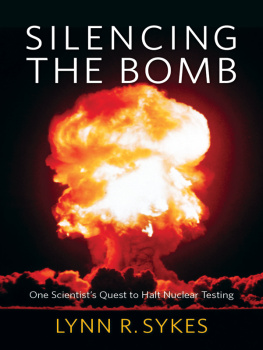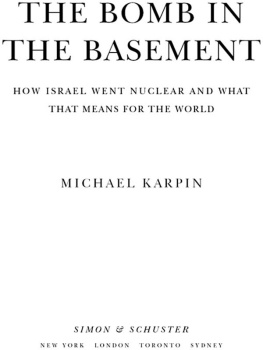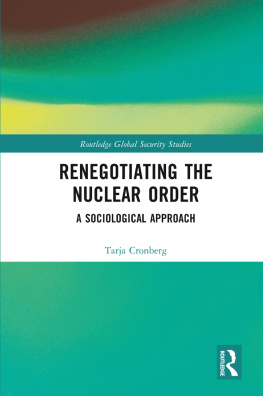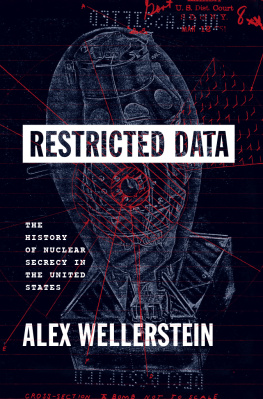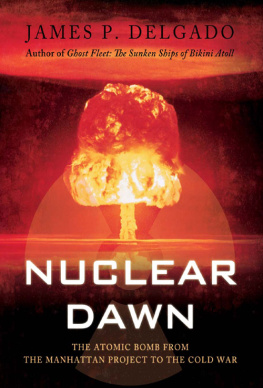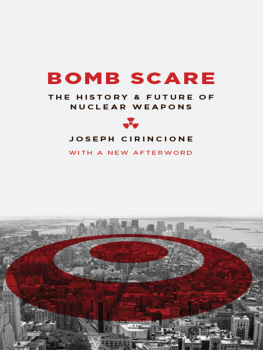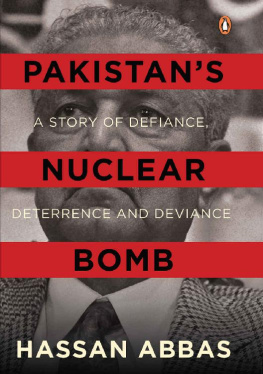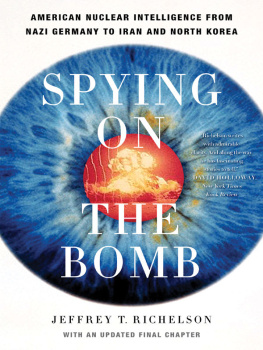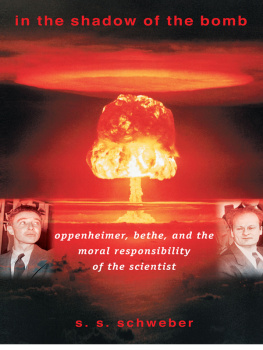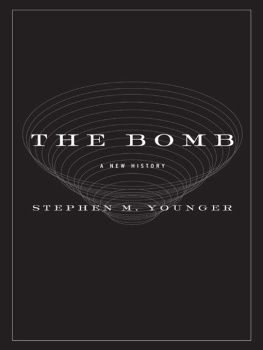Table of Contents
SILENCING THE BOMB
LYNN R. SYKES
SILENCING THE BOMB
One Scientists Quest to Halt Nuclear Testing
COLUMBIA UNIVERSITY PRESS
NEW YORK
Columbia University Press
Publishers Since 1893
New York Chichester, West Sussex
cup.columbia.edu
Copyright 2017 Lynn R. Sykes
All rights reserved
E-ISBN 978-0-231-54419-1
Library of Congress Cataloging-in-Publication Data
Names: Sykes, L. R., author.
Title: Silencing the bomb : one scientists quest to halt nuclear testing / Lynn R. Sykes.
Description: New York : Columbia University Press, [2017] | Includes bibliographical references and index.
Identifiers: LCCN 2017010287 (print) | LCCN 2017044883 (ebook) | ISBN 9780231544191 (electronic) | ISBN 9780231182485 (cloth : alk. paper)
Subjects: LCSH: Nuclear weaponsTesting. | Comprehensive Nuclear-Test-Ban Treaty (1996 September 10) | Nuclear arms control. | Sykes, L. R.
Classification: LCC U264 (ebook) | LCC U264 .S96 2017 (print) | DDC 341.7/34dc23
LC record available at https://lccn.loc.gov/2017010287
A Columbia University Press E-book.
CUP would be pleased to hear about your reading experience with this e-book atc .
Cover design: Milenda Nan Ok Lee
Cover image: Corbis Historical Collection / Getty Images
CONTENTS
I thank my wife, Kathleen M. Sykes, for her careful editing and advice. I thank Dan Davis, Paul Richards, and Frank von Hippel for carefully reading the manuscript and for their comments. I have worked with each of them on nuclear arms control issues for many decades. I also appreciate my many interactions on test ban issues with Charles Archambeau, Ola Dahlman, Gran Ekstrm, Jack Evernden, David Hafemeister, W-Y Kim, Peter Marshall, Meredith Nettles, and Gregory van der Vink. I also thank Kevin Krajick for his editing.
Many nongovernmental organizations (NGOs) in the United States have worked for decades to achieve nuclear test ban treaties. They include the following:
Arms Control Association
Center for Defense Information
Council for a Livable World
Federation of American Scientists
Friends Committee on National Legislation
Friends of the Earth
Institute for Science and International Security
Lawyers Alliance for World Security
Natural Resources Defense Council
Peace Action
Physicians for Social Responsibility
Stockholm International Peace Research Institute
I thank all of them for their long contributions to nuclear test bans and arms control.
I have long wanted to write about my fifty years of work toward bringing about an international treaty that would completely ban the testing of nuclear weapons. I was fortunate to have participated in the negotiation of a nuclear test ban treaty with the Soviet Union in 1974. For more than fifty years I have also witnessed firsthand strenuous opposition in the United States to test bans by a cast of characters who sometimes acted from nefarious motives. The use of nuclear weapons is an issue that threatens our very existence. This is a story I believe needs to be told.
The quest for a complete ban on nuclear testing is now more than sixty-five years old. The process of ratification could exceed the seventy-two years it took from 1848 until 1920 to enact a constitutional amendment guaranteeing women the right to vote in the United States. The treaty has yet to enter into force because all countries possessing either nuclear weapons or reactors have not ratified it. Nevertheless, Russia, the United States, China, Britain, France, and Israel have not tested nuclear weapons since they signed it in 1996; India and Pakistan, which did not sign the treaty, have not tested since 1998. In these important ways the treaty has been very successful.
A major nuclear exchange between the superpowers would be a disaster of unprecedented destruction and horror, the worst in all of human history. An exchange between India and Pakistan alone could kill more than half a billion people and affect other countries, particularly China. Although the Cold War is over, weapons of the superpowers are on hair-trigger alert and could be fired in response to false alarms or by unauthorized users.
Other tasks pulled at me through the years: research on earthquakes in the greater New York City region, revisiting early work on plate tectonics, and long-term earthquake prediction as new information became available, as well as working as a consultant to New York State regarding the likelihood of earthquakes near nuclear power plants located along the Hudson River not far from New York City. During my forty years as a professor prior to my retirement in 2005, I advised about thirty graduate students at Columbia University, raised funds for their support, and usually taught two classes each year in a dozen different areas of the earth sciences, environmental hazards, and the nuclear arms race.
Now, at eighty years old, I have made time to reflect upon my lifeprofessionally and personally. My undergraduate years at the Massachusetts Institute of Technology opened doors to me, both scientifically and culturally. The Lamont Geological Observatory of Columbia University, where I landed as a graduate student in 1960 after college with a degree in geology and geophysics, had been formed only a dozen years earlier. I was in the right place at the right time as I became involved in the birth of plate tectonics and the development of methods to verify a Comprehensive Nuclear Test Ban Treaty. My chosen field of seismology, the study of earthquakes, is the primary science and technology for detecting, locating, and identifying underground nuclear tests. Methods for examining earthquakes are very similar to those for nuclear explosions.
In 1966, after halting research on another project, I worked on the mechanisms of earthquakes and demonstrated that new seafloor was being formed along mid-oceanic ridges and that continental drift, long rejected by many scientists, was a reality. I was fortunate that the early part of my career and the following decade coincided with the Golden Age of funding of the earth sciences in the United States.

